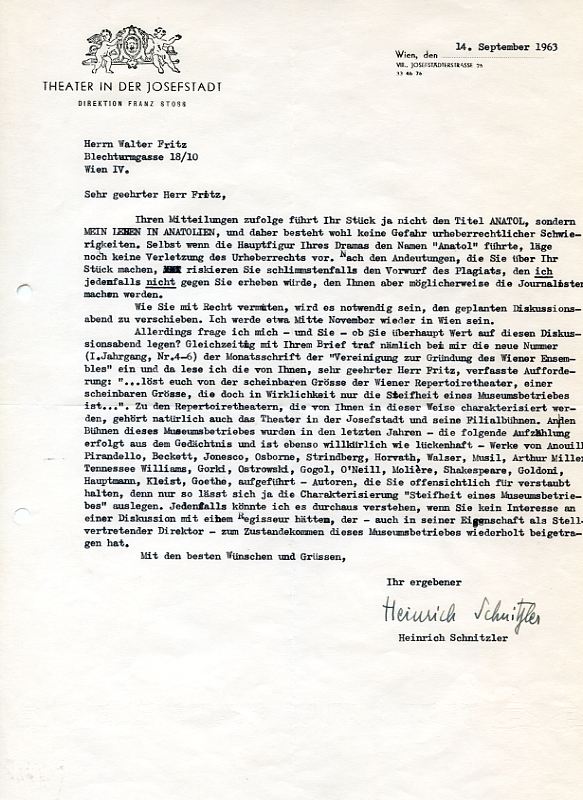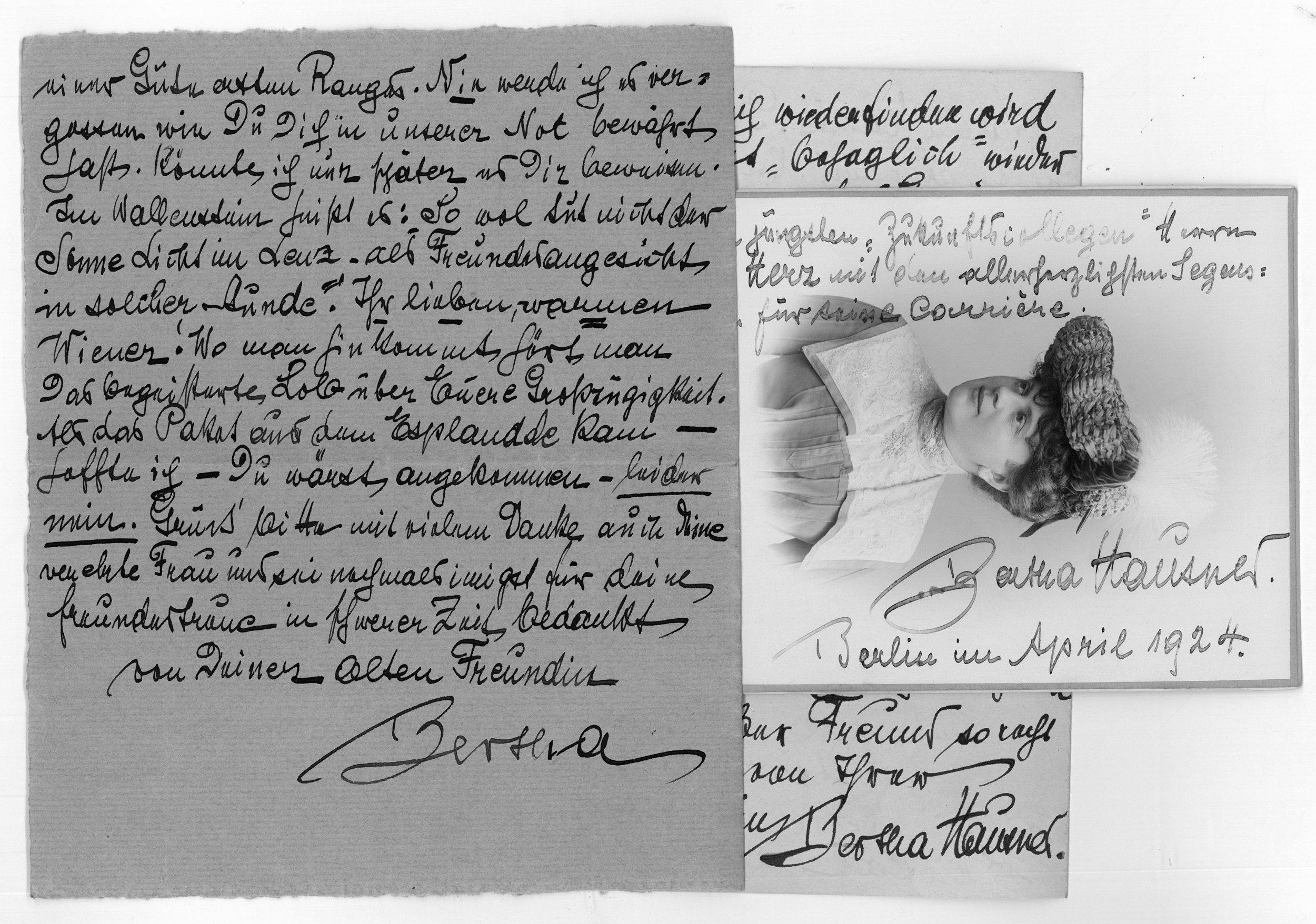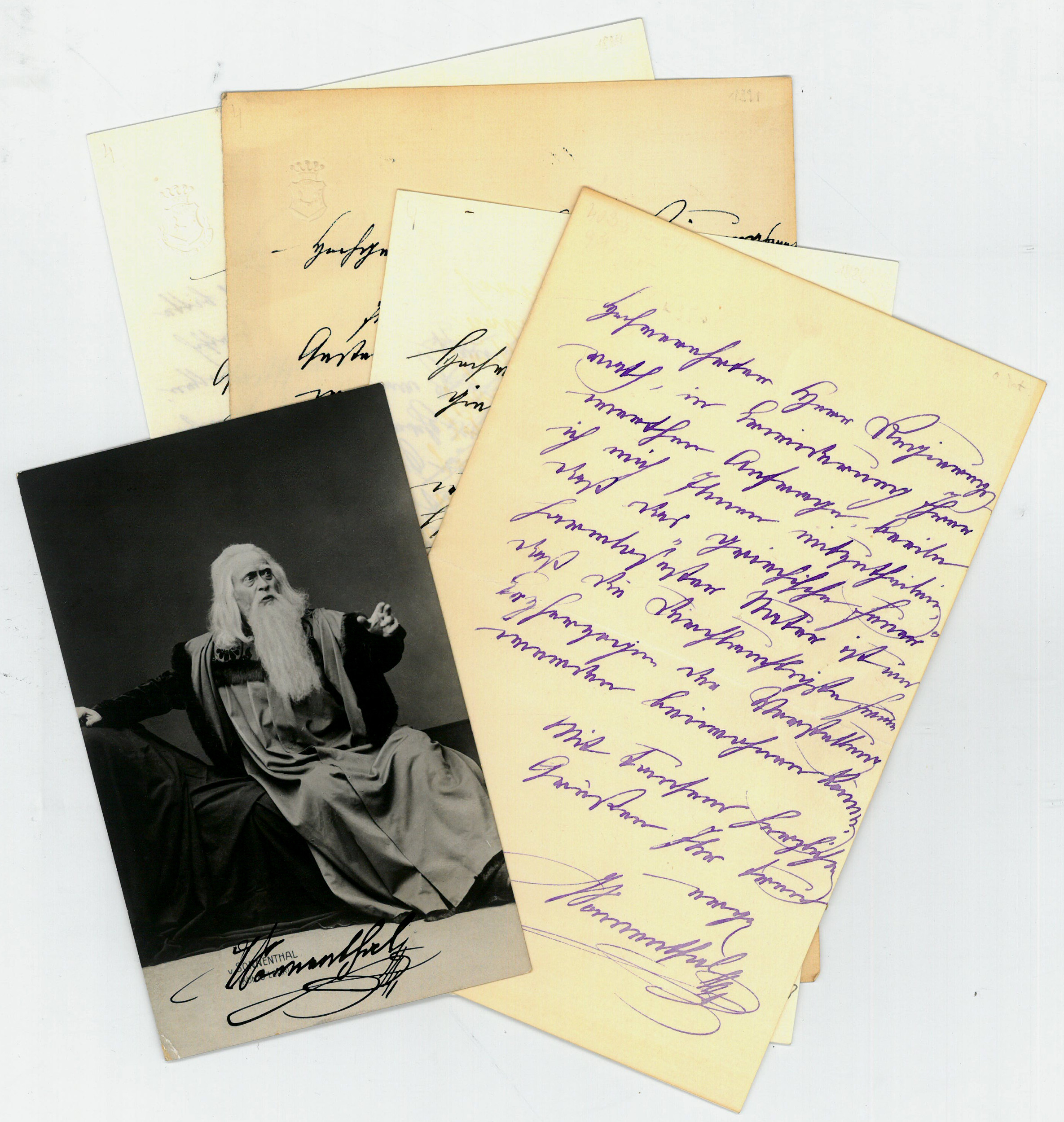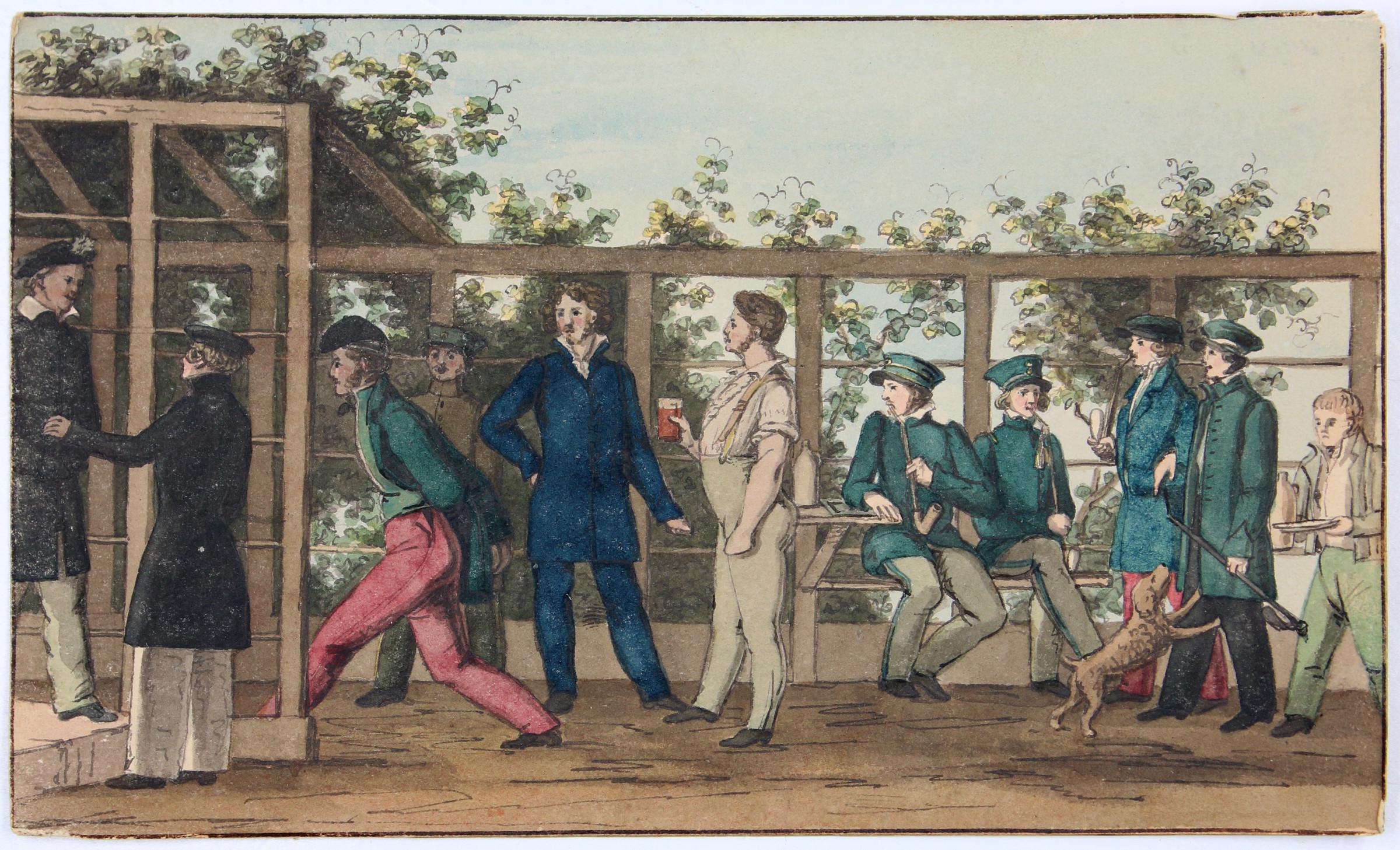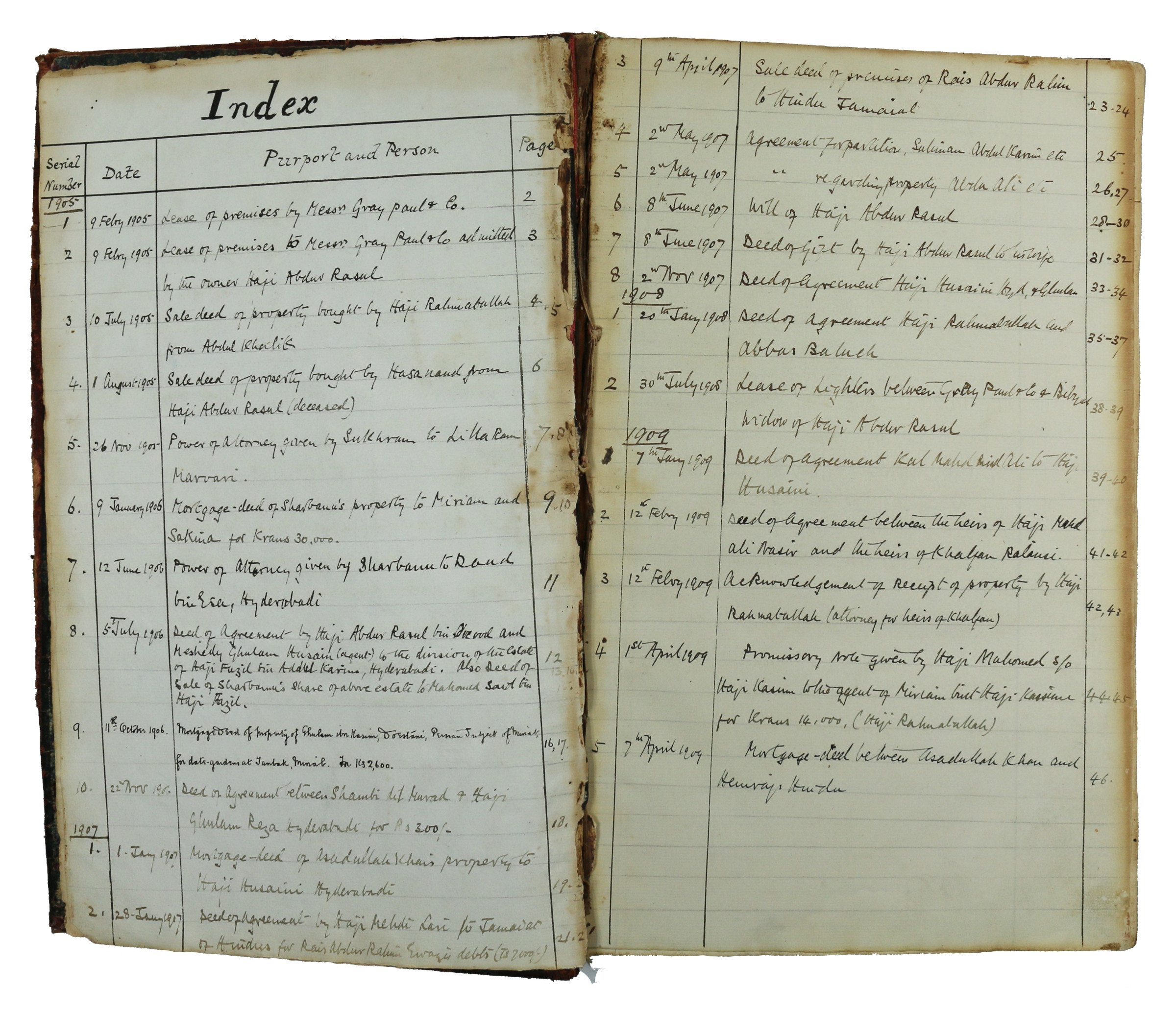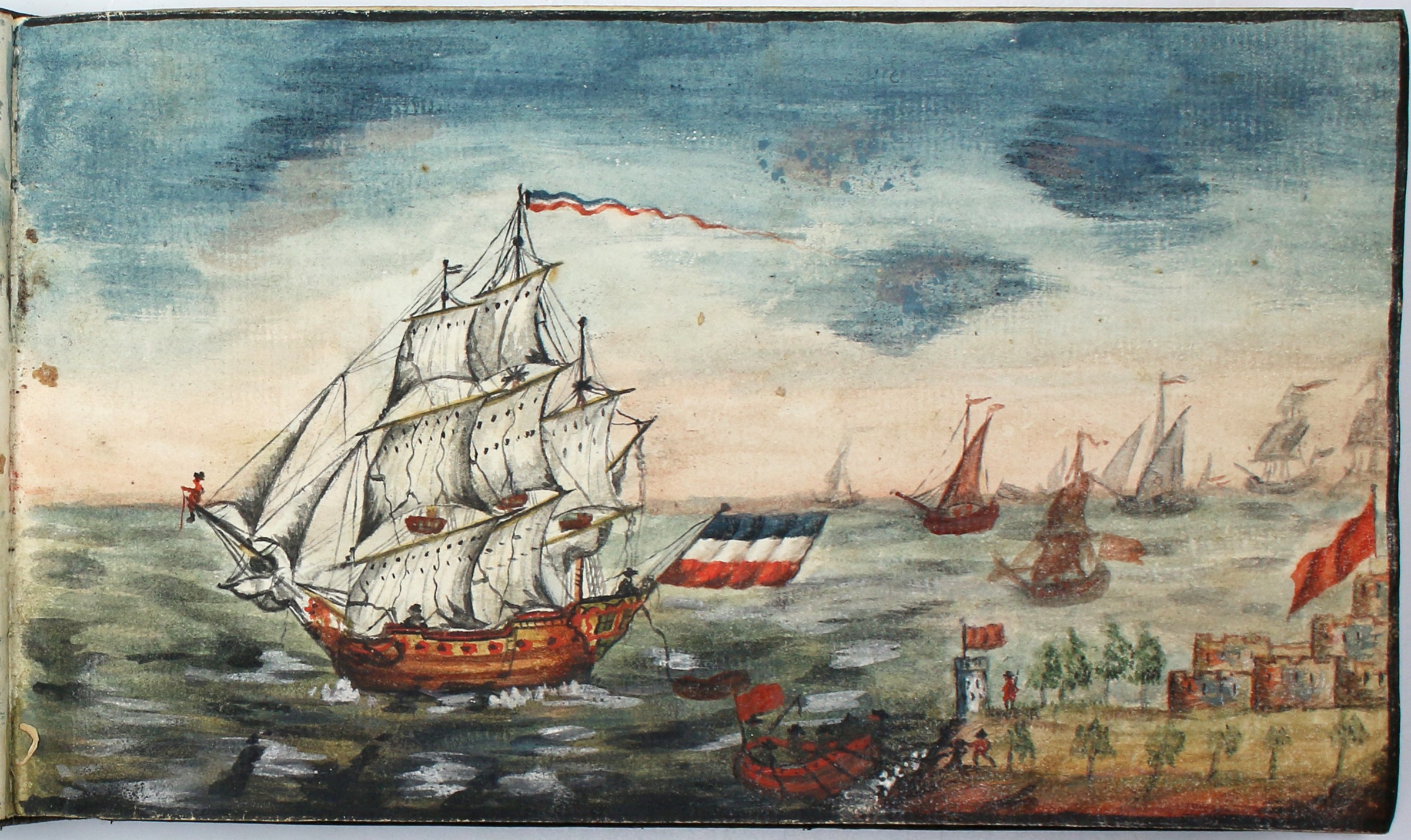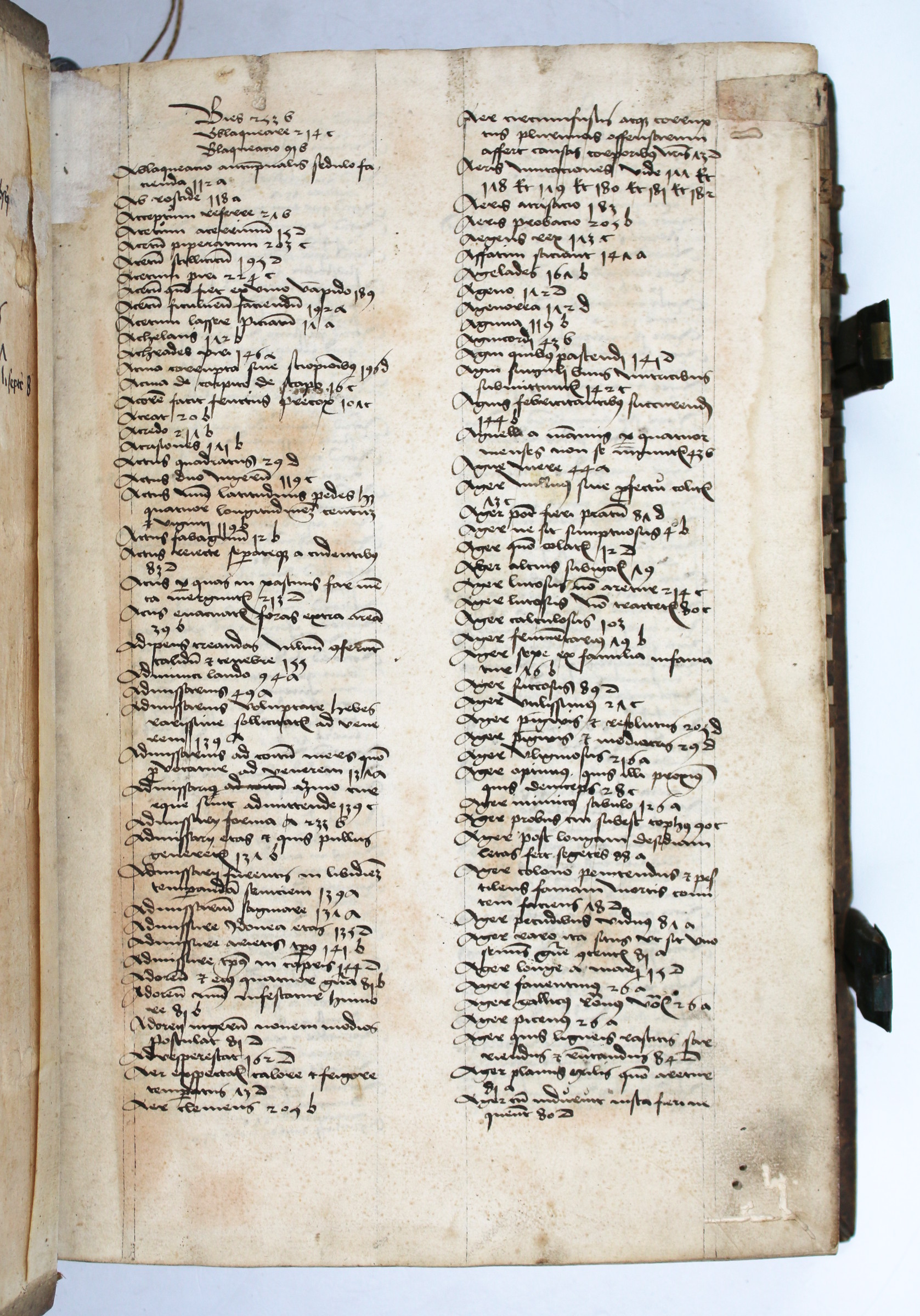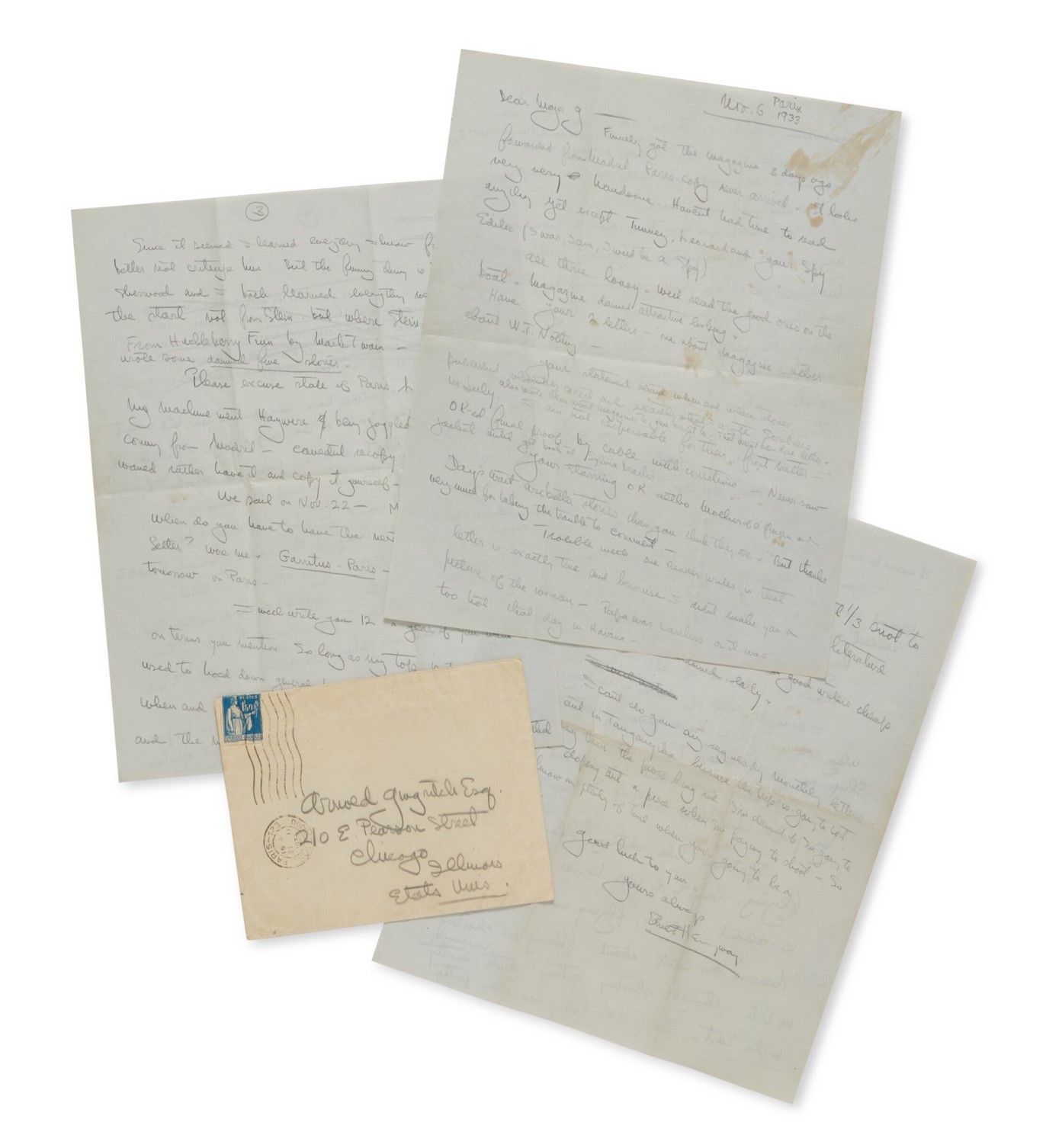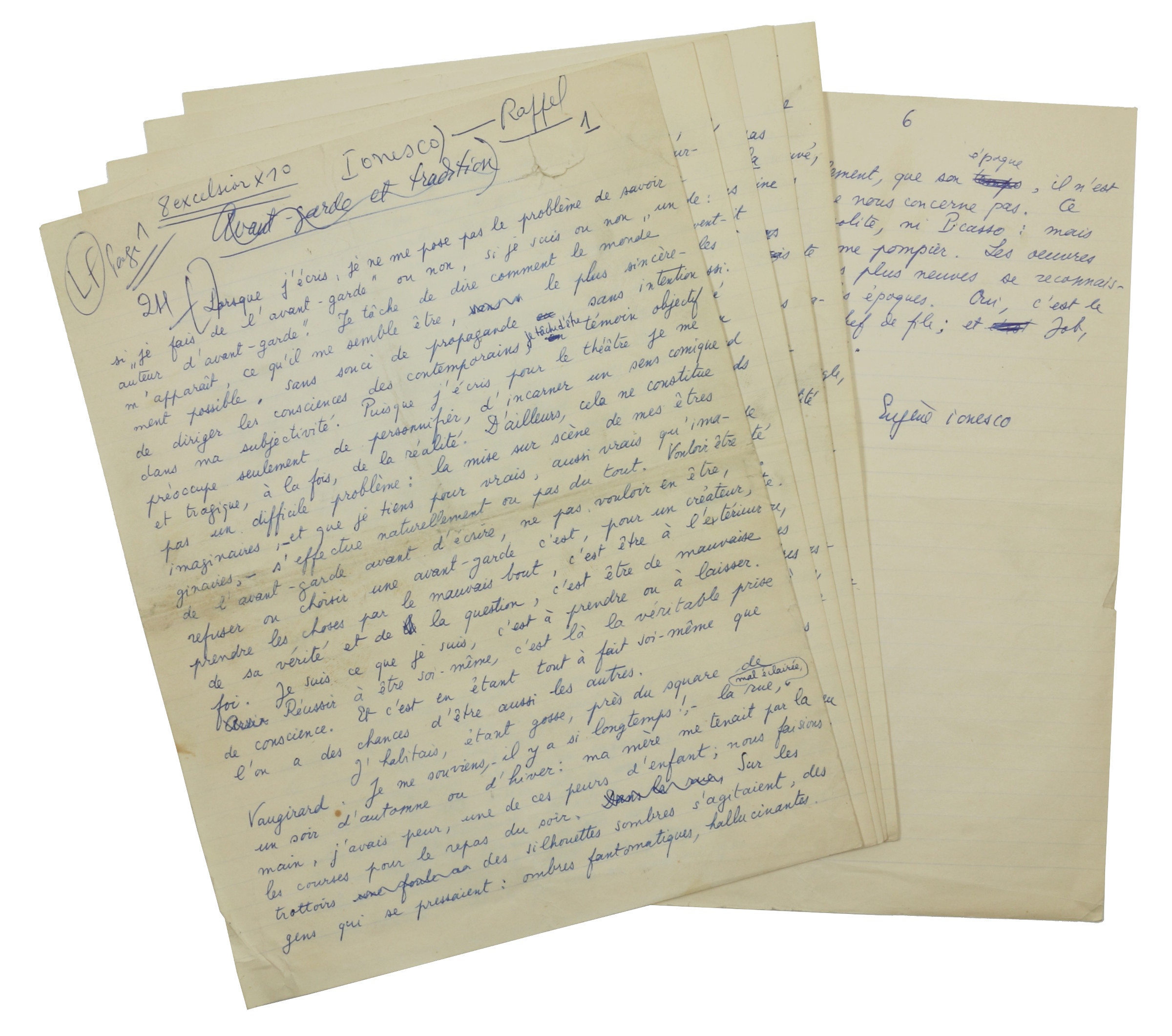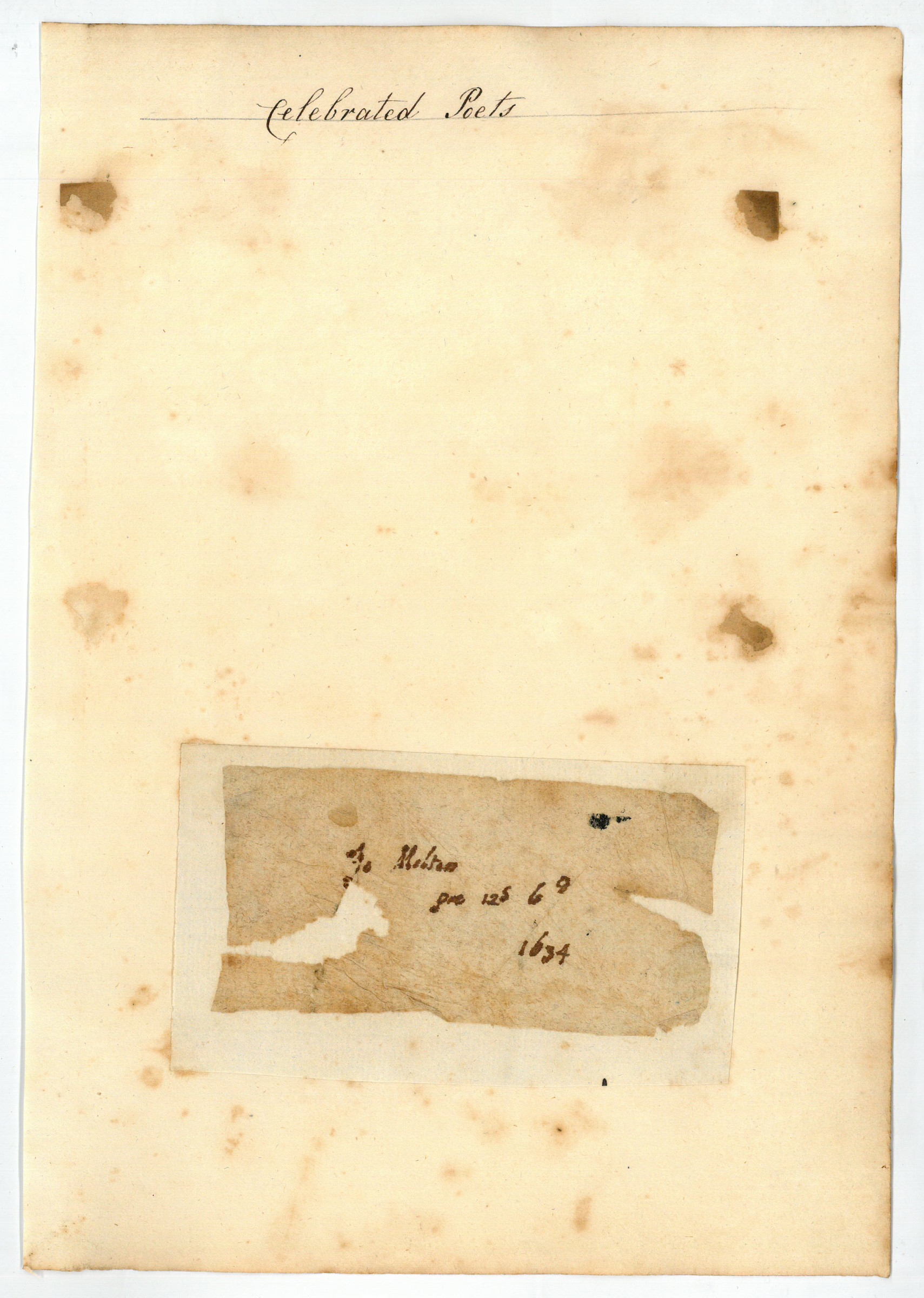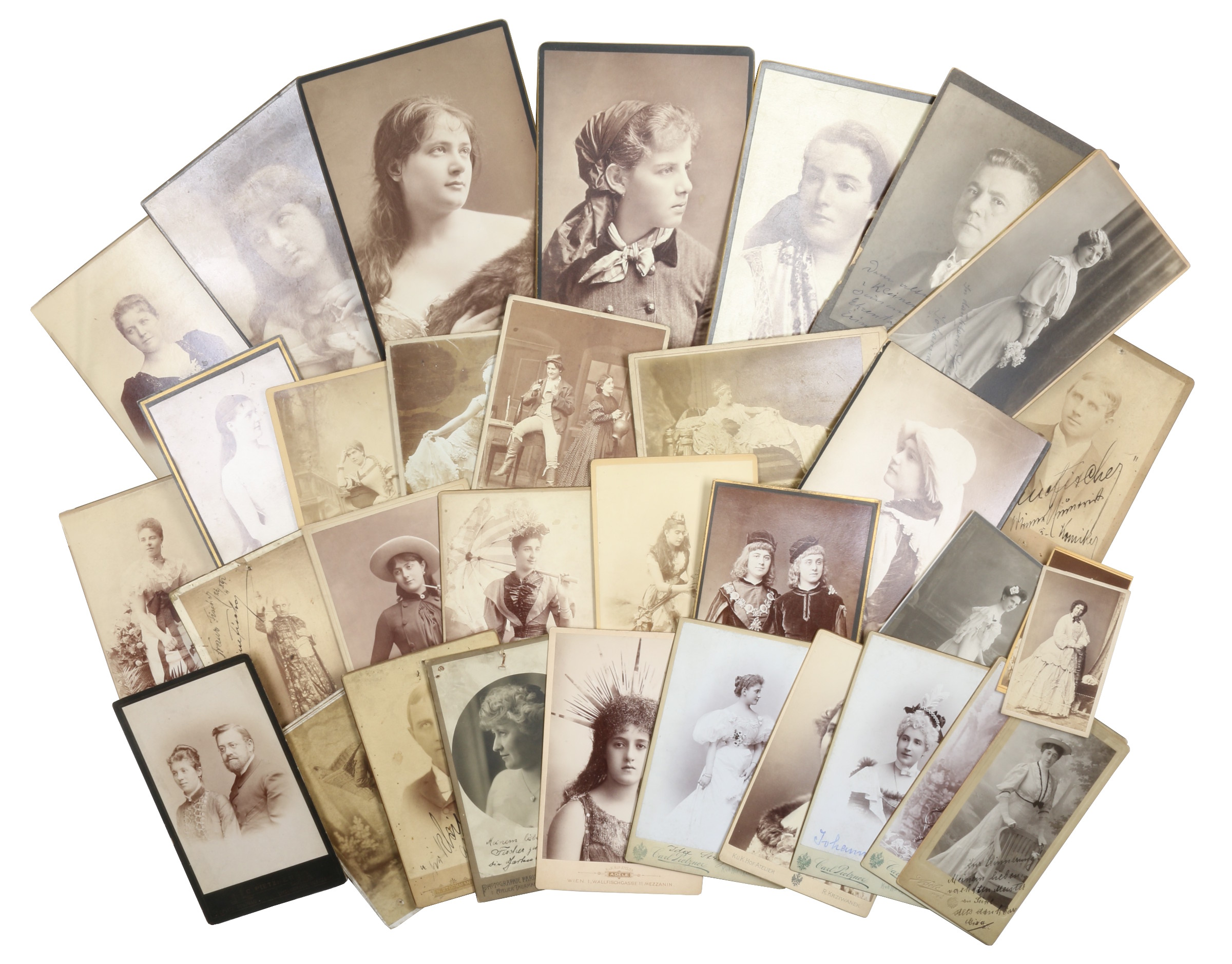
Sammlung von 40 Kabinettphotographien österreichischer und deutscher Schauspieler …Versch. Orte, ca. 1874-1908.
Die Künstlerporträts, darunter viele Rollenporträts, wurden hauptsächlich von Wiener Ateliers angefertigt, einzelne Fotografien stammen u. a. von Ateliers aus Berlin, Cassel, Bad Aussee, Prag und Brünn. Unter den identitifizierbaren Persönlichkeiten sind die Burgschauspielerin Charlotte Wolter (1834-1897), der Schauspieler und Burgtheaterdirektor Hugo Thimig (1854-1944), der Wiener Schauspieler und Komiker Franz Fischer (1857-1934), der mit drei signierten Photographien vertreten ist, sowie der Schauspieler und Theaterdirektor Adolf Ranzenhofer (1856-1910) hervorzuheben. Das relativ schlecht erhaltene Rollenporträt Ranzenhofers ist Franz Fischer gewidmet, signiert und datiert (8. Oktober 1885).
Ein besonders charmantes Szenenfoto des Wiener Ateliers Dr. Székely, von dem ein Abzug im Wiener Theatermuseum aufbewahrt wird, zeigt Stella von Hohenfels-Berger (1857-1920) als "Richard, Herzog von York" neben Fanny Walbeck als "Eduard, Prinz von Wales" in Shakespeares "Richard III". Es stammt von einer Burgtheaterinszenierung, wobei der Abzug des Theatermuseums auf den 17. April 1874 datiert ist.
Weitgehend in Vergessenheit geraten sind Laura von Bruszkay (gewidmet), Mathilde Czjzek von Breymann (gewidmet und datiert), Wilhelmine Festetics, Fini Grinino (gewidmet), die Altistin Johanna Grünnes (gewidmet und datiert), Berthy Hofmann (gewidmet und datiert), Lona Nansen (gewidmet und datiert), Hedwig von Raab (gewidmet), Therese Reiner (gewidmet), Fanny Schönberger, Gisela Schlossarek (gewidmet), Mizzi Steiger (gewidmet), Ida Strasser (gewidmet), Marie Walcher und Johanna Wandl.
Vier Fotografien sind weder beschriftet noch gewidmet, elf weitere konnten trotz Sammlervermerks oder Widmung nicht eindeutig identifiziert werden. Bei drei als "Wiener Schönheiten-Gallerie" beschrifteten Fotografien des Wiener Ateliers Löwy dürfte es sich um Modellporträts handeln.




